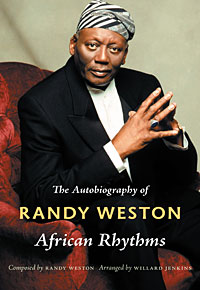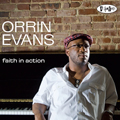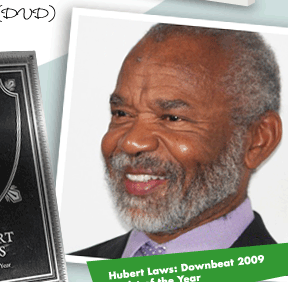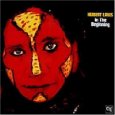Plain and simple folks, as I’ve been preaching for many moons, the biggest issue facing jazz music is not a matter of lack of gigs or venues, dying record companies or jazz masters checking out for ancestry, or the lack of widespread 24/7 jazz radio; the biggest issue is audience, and our collective ability to grow the audience for this music. I’ve long held that they’re out here — "they" being the latent audience for this music, the undiscovered audience for this music, the slumbering audience for this music. After many years of teaching jazz courses on the college level, and hearing dozens of students exclaim that their experience with this music through my course was their first exposure to the music — and how a new world of music has opened up for them — I’m convinced there is a broader audience for this music than we’re reaching through our traditional means.
There’s a fresh web portal operating in New York City which is endeavoring to do its part to grow the audience for this music by providing timely information about who’s playing where in the five boroughs, and more. But Seach And Restore is much more than an information-based web portal; they are also one of the entities behind the recent, and quite ambitious, 2010 New York City Undead Jazzfest. Over two reportedly electric June nights in the Village, the Undead Jazzfest presented a 35+ group marathon festival at three venues not ordinarily known for jazz presentation: Le Poisson Rouge, Kenny’s Castaways, and Sullivan Hall. This was their first warm weather foray following two years of the very successful Winterfest, a similar jazz marathon presented in January to piggyback on the Association of Performing Arts Presenters conference in NYC. Recently I sought out Sarah Charles of Search And Restore for the 411 on their efforts.
What is the mission of Search And Restore?
Search & Restore is a nonprofit organization dedicated to sustaining, expanding and exploding the live jazz audience in New York City among younger and bigger audiences. Through creative concert presentation and SearchAndRestore.com, the best resource for live jazz in New York City, Seach and Restore aims to unite a community around forward thinking jazz and is determined to shatter the pretense that an audience needs to understand the music before they hear it. Rather, Search and Restore feels that jazz being made today is some of the must human music ever made, and will bring these incredible melodies and improvised insanities to as many people as possible. Don’t try and stop them.
How would you make the case for the basic necessity of Search & Restore? And please detail the development of Search & Restore.
We’re just throwing the shows that we would want to go to. When I moved to New York in 2006, I was 19 years old and every show I went to had incredible music, but there were a lot of issues present that I felt kept the scene from developing as a sustainable and dynamic community. Most venues charged by the set, so you were basically ushered in and out of the venue for an hour of music. On top of that there were drink minimums, and often times ticket prices that exceeded $20. The only venues to see a great show for a cheap ticket were tiny, and a sold out show often meant some audience discomfort. I knew that things could be better, so I started a monthly series at the Knitting Factory. My goal has and will always be to value the audience and the music equally, as part of the whole, a positive and memorable event.
The shows are often double bills, for one cheap cover, with a student discount, no drink minimum, and taking place in unconventional settings for the music. The Knitting Factory series developed our community among jazz fans in the city, young and old alike. Then when the Knit closed its doors we began working on SearchAndRestore.com, again making an effort to fill a void.
I wanted to create a web site that was a true home for the modern jazz and improvised music scene, and was also a place for people who wanted to know more about the music but didn’t know where to start. We started by taking the calendar information for every venue in the city that has jazz shows and putting it into our database, which we do by hand every month. So, you can go to SearchAndRestore.com and find out what shows are happening every night, or see a venue’s calendar for the entire month all in one place. We are slowly but surely making the move towards hosting much more original content, and in the next year SearchAndRestore.com will be the absolute best place to see dynamic video of all the amazing music happening in New York. We really just want to provide a great place for people to go to discover new music. Since the beginning I’ve built up a trust with the community that we only present and endorse what we think is great. There’s so much magic happening in New York City and we want to show it to more people all the time.
Jazz accidentally became an exclusive and inaccessible art. I believe that is due to the popularized academic notion that you need to truly understand the history of the music to understand what’s happening with it. I’ve taken people to shows and they think they’re supposed to "get" something. But they’re not. There is a strong breed of modern jazz and improvised music being made right now that I believe is more human than anything. You could have been born yesterday and let the music envelop you, and it would feel really, really great. I’m in the business of music that makes people feel really great, and everything Search & Restore does revolves around that. This music is for everyone; jazz is a music of the people, and we’re taking it back.
How can the jazz community best support the goals of Search & Restore and also become involved or engaged if they wish?
On the most basic level, the community can come to shows. We’re always throwing shows and festivals and love seeing the recurring familiar faces as our community grows. We’re all working towards the same thing. Our organization has a large volunteer program as well. so if anyone would like to see great shows for free, they can email SearchAndRestore@gmail.com to find out how they can contribute to our operations of creative promotion, audience development, and the many other endeavors we have in the works.
Now that we are a 501(c)(3) not-for-profit organization we also of course accept tax deductible donations. We haven’t made a full-fledged fundraising effort, but we will embark on one in the next few months to help get our video department up and running. Finally, people can simply tell their friends. Our web site really needs to offer what every jazz fan is looking for, and the more people who can dig into it, the more we can grow.
Where do you and your partners envision Search & Restore going with this, and ultimately what services do you see yourselves providing to the jazz community?
I believe at the core, Search And Restore is injecting a raw energy into the jazz scene. Because we are so young, we’re able to approach our shows in a unique way, and audiences are responding to being dealt something different. So, we’re going to keep upping the ante. Eventually we’ll be able to have a weekly concert series, a new double bill each week that can bring people of all ages and backgrounds together to hear some amazing music. We’ve felt the fire, such as with our 4 night Kneebody consecutive nights residency at 45 Bleecker in February, which packed in 200 people every night, many of whom were under the age of 25. I want to access that energy more frequently.
But the Search And Restore video peogram is the real gold on the horizon. Once we begin integrating live video into our web site, done the only way we know how — by filming everything [ourselves] — people will suddenly have an entry point to the NY jazz scene online. These bands truly shine in the live setting, significantly more than on record. And the albums tend to sound better once you’ve seen it live. So, by giving people a quality video database of amazing performances, more and more people will be able to engage with the music being made today, and modern jazz can develop a sustainable scene, rather than barely hold onto the audience it has. The next step will be to travel to festivals across the world and film the jazz produced at a local level, so that through SearchAndRestore.com people can get a great sense for where jazz and improvised music is at on a global scale.
I also want to shatter the barrier between jazz and the rest of the music world. The current rock scene is more dynamic than ever, but it’s been very hard to develop any audience crossover. It’s been happening between rock and the classical new music scene, but never with jazz. Jazz shot itself in the foot with the fusion movement, which was so explicitly "rock + jazz" and I think it scared a lot of people off, and still does. But there’s so much great jazz happening now that has a serious aggressive energy and pulse that is not far off from current rock and roll magic being created by bands such as the Dirty Projectors or Liars, or These Are Powers. The list could go on and on and on, and by recognizing that I think Search And Restore can become a trusted entry point into great jazz for people who have normally rejected the music all together.





